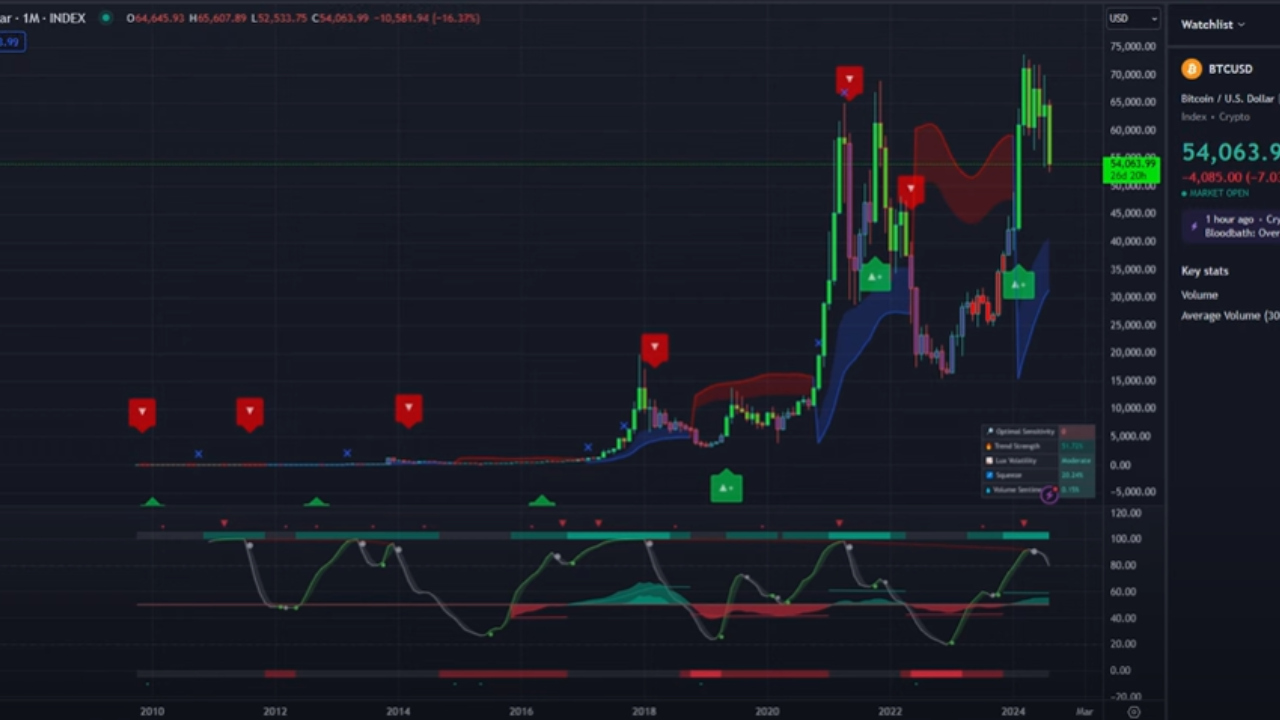Bitcoin price drops $270 billion in a crypto selloff, as ether prices plummet.
bitcoin price

On Sunday, the value of the cryptocurrency market crashed as investors kept pulling out of riskier investments.
The total value of cryptocurrencies fell by over $270 billion during the last day, driven primarily by an 11% decline in bitcoin and a 21% decline in ether, according to CoinGecko data.
The crypto market selloff was accompanied by a more general decline in Asian-Pacific equity markets. Following the announcement last week that the Bank of Japan would raise its benchmark interest rate to the highest level in 16 years, the Nikkei 225 in Japan saw a 7% decline, compounding losses.
The tech-heavy index’s worst three weeks since September 2022, when the market was in freefall, came to an end last week as the Nasdaq fell 3.4% into correction territory in the United States. Nvidia and Amazon were involved in the decreases.
The decline in the manufacturing sector, increased unemployment, a weaker-than-expected jobs report, and dismal earnings all contributed to last week’s stock market meltdown. The U.S. Federal Reserve decided against cutting its benchmark rate in September, which many market observers had factored into their projections. Instead, the Fed chose to maintain its current rate. Better performance for riskier assets is typically correlated with lower interest rates.
The price of bitcoin has dropped to its lowest point since February. At almost $54,000, the largest cryptocurrency in the world is trading. It has still increased by about 23% this year.
Ether, the native token that powers the Ethereum network, lost all of its annual gains and is now trading at about $2,300. The price of solana has dropped by 10%, and Binance’s BNB coin has dropped by more than 15%.
This week, investors will also be watching central banks in Australia and India, as well as fresh trade data from China and Taiwan.
A wider range of investors will be affected by the most recent crypto meltdown, as the SEC this year approved new spot exchange-traded funds for ether and bitcoin. Hundreds of millions of dollars have been invested in the coins by the ETFs. It was announced on Friday by CNBC that Morgan Stanley will soon permit its 15,000 financial advisors to introduce bitcoin ETFs to its clientele, a first for the Wall Street industry.
As panic grips the markets, Bitcoin plummets to $53K and Ether becomes negative for 2024.
The Nikkei of Japan dropped more than 6% early on Monday, extending the index’s three-day loss to around 15%.
During Sunday night U.S. hours, a widespread cryptocurrency selloff intensified, sending ether (ETH) back to December-low pricing and bitcoin (BTC) to depths not seen since February.
Over the last 24 hours, Bitcoin has dropped by 12%, and week over week, it has dropped by 20%. With ether (ETH) down 21% over the last day and 30% over the last week, the cryptocurrency has lost all of its gains for the year and is down about 3% since January 1.
Over the last day, the larger CoinDesk 20 Index has decreased by 12%.
The Bank of Japan may have set off the current big fall in both traditional and cryptocurrency markets when it raised its benchmark interest rate last week. The country’s Nikkei stock index plummeted as a result of the monetary tightening. The Nikkei is currently down by over 15% over the last three sessions and 20% from a mid-July top, after falling another 6% early on Monday.
The Nasdaq fell more than 5% in the last two sessions of last week as the activity in Japan extended to the United States. Sunday night action has seen a 2.5 percent decline in Nasdaq futures.
A few were taken aback not only by the Bank of Japan’s rather surprising hawkishness last week but also by the U.S. Federal Reserve’s decision to seem hesitant about lowering rates in September, something almost everyone in the market had believed would happen.
It remains to be seen if the Fed made a mistake in policy, but for now, the markets are determining their own course. With a 71% possibility of rate cuts of 50 basis points and a 29% chance of a shift of 25 basis points, traders have priced in a 100% chance of lower U.S. base rates in September.
The U.S. 10-year Treasury yield, which is viewed further out on the maturity curve, fell to 3.75% on Sunday night from 4.25% only one week prior. This is a full 150–175 basis points below the current fed funds objective of 5.25%–5.50%.









